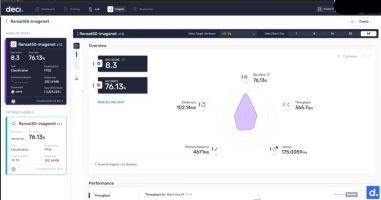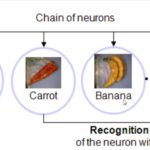SuperGradients is an “all-in-one” deep learning training library for computer vision models. SuperGradients enables developers to train PyTorch-based models for the most common computer vision tasks, including object detection, image classification and semantic segmentation with just one training script. In addition, users can easily load and fine-tune pre-trained state-of-the-art models (YOLOv5, DDRNet, EfficientNet, RegNet, ResNet, MobileNet, etc.), of which many were optimized to deliver higher accuracy compared to existing training libraries.
AI developers face an upward struggle developing production-ready deep learning models for deployment. The overhead of integrating with various existing  training tools and the effort to reproduce the training results for state-of-the-art models is time consuming and causes headaches for beginners and experts alike. Developed by Deci’s deep learning experts to tackle these very problems, SuperGradients offers a wide range of pre-trained production-ready deep learning models that were tested in production environments (i.e. converted to optimized deployable runtime executors such as OpenVINO, TensorRT, ONNX). The library also includes proven training recipes for easy reproduction of training results, thus making AI more accessible for everyone.
training tools and the effort to reproduce the training results for state-of-the-art models is time consuming and causes headaches for beginners and experts alike. Developed by Deci’s deep learning experts to tackle these very problems, SuperGradients offers a wide range of pre-trained production-ready deep learning models that were tested in production environments (i.e. converted to optimized deployable runtime executors such as OpenVINO, TensorRT, ONNX). The library also includes proven training recipes for easy reproduction of training results, thus making AI more accessible for everyone.
“As deep learning is maturing and becoming more widely adopted, the model development and training processes must be simplified. In order to deliver on the promise of deep learning, teams require tools that can facilitate the architecture selection phase, as well as enable them to achieve better training results faster,” said Yonatan Geifman, co-founder and CEO of Deci. “This is why we decided to release SuperGradients as an open-source solution for the entire AI community to benefit from. By offering developers better tools to build, optimize and deploy models, we help to simplify the entire deep learning lifecycle and enable developers to focus on what they do best- creating innovative AI solutions to solve the world’s most complex problems.”
With SuperGradients, AI developers no longer need to spend time scouring through different repositories to find the most suitable architecture- SuperGradients contains all of the most commonly used models in one place. Additionally, the library has built in access to pre-trained state-of-the-art models, many of which deliver higher accuracy compared to other libraries, meaning developers can obtain better results faster, while easily integrating these models into their code base.
Benefits of SuperGradients include:
· Easy access to train & fine-tune state-of-the-art models for any computer vision task with just one training repository.
· Training recipes that outperform other training libraries, as well as code examples for a wide range of computer vision models generated by Deci’s team of deep learning experts, thus eliminating uncertainty and shortening the training lifecycle.
· Plug & play hyperparameters for training, dataset, and architecture
· Seamless integration of deep learning models into users’ codebase hassle free.
SuperGradients also supports the easy fine-tuning and retraining of DeciNets, a family of state-of-the-art deep learning models generated by Deci’s proprietary Automated Neural Architecture Construction (AutoNAC) technology. DeciNets are currently being used by leading AI teams worldwide for multiple use cases.
Deci, Hugi Tower 8F, Abba Hillel Silver Rd 12, 5250606, Ramat Gan, Israel, Phone: + 972 3 3751969 | +1 650 448 1069, deci.ai/



